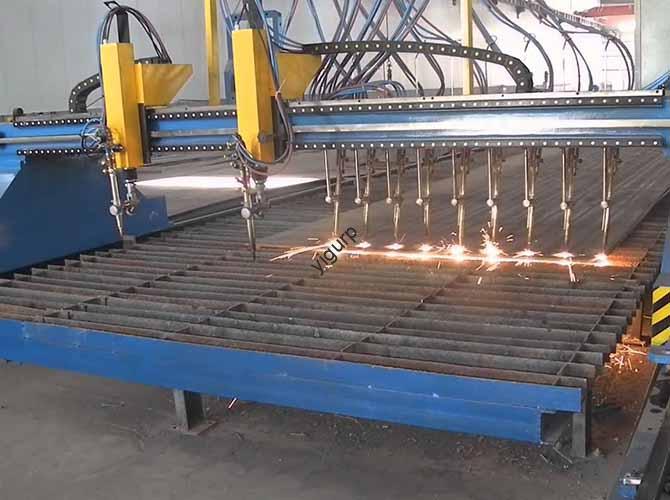Surface finish is a critical metric for CNC-machined parts, directly impacting functionality, эстетика, and performance—especially in industries like aerospace, медицинские устройства, и автомобильная. This article breaks down actionable strategies to enhance CNC machining surface finish, используя четкие сравнения, Изученные данные, and practical solutions.
1. Первый: Understand Surface Finish Evaluation Metrics
Before improving surface finish, you need to measure it accurately. The table below compares the most common evaluation indicators, their definitions, и варианты использования:
| Indicator | Определение | Ключевая функция | Идеальный вариант использования |
| Ra value | Arithmetic average of surface microscopic undulations (in μm) | Наиболее широко используется; simple to measure | General CNC parts (поворот, фрезерование) |
| N-level Standard | ISO grading system (N1 to N12) | Smaller number = higher finish | International quality compliance |
| Rz Value | Ten-point height of roughness (peak-to-valley average) | Reflects extreme surface irregularities | Parts with strict wear resistance requirements |
| Grit Size | Measure of sanding/polishing particle fineness | Larger grit number = finer surface | Post-machining polishing (НАПРИМЕР., алюминиевые сплавы) |
2. Core Factors That Harm CNC Surface Finish: A Contrast
Poor surface finish often stems from mismanagement of key variables. Below is a contrast between detrimental practices и optimal controls for critical factors:
| Фактор | Detrimental Practices (Causes Roughness) | Optimal Controls (Boosts Smoothness) |
| Tool Conditions | Dull edges, low-wear materials (НАПРИМЕР., HSS), без покрытия | Ultra-fine grain carbide или ПКД (polycrystalline diamond) инструменты; TiAlN-coated edges |
| Параметры резки | Low spindle speed, high feed rate, deep cutting depth | Высокоскоростной (reduces tool mark spacing), low feed (0.05–0.1 mm/rev), shallow depth (0.1–0,3 мм) |
| Material Prep | Unprocessed alloys (internal stress), мягкие металлы (нормы) | Stress relief treatment (for thin-walled parts); pre-machining deburring (для алюминиевых сплавов) |
| Cooling/Lubrication | Insufficient coolant, external cooling only (для глубоких дыр) | Combined high-pressure internal cooling + external cooling; coolant matched to material (НАПРИМЕР., mineral oil for steel) |
| Machine/Fixture Stability | Loose clamps, low-rigidity CNC machines | High-precision 5-axis linkage machines; rigid clamp designs (avoids vibration-induced ripples) |
3. Step-by-Step Strategies to Improve Surface Finish
Follow this linear, actionable process to achieve consistent, high-quality surface finish:
Шаг 1: Optimize Tools and Cutting Parameters
- Использовать imported PCD tools for non-ferrous metals (НАПРИМЕР., алюминий) to avoid sticking and burrs.
- Применить “высокоскоростной, low-feed” finishing strategy: Для стальных деталей, set spindle speed to 3,000–6,000 RPM, Скорость корма 0.08 мм/rev, and cutting depth to 0.2 мм.
- Conduct 2–3 trimming passes to eliminate residual tool marks from rough machining.
Шаг 2: Enhance Cooling and Chip Evacuation
- For deep-hole machining (НАПРИМЕР., boreholes >10x diameter), использовать high-pressure internal cooling (30–50 bar) to direct coolant to the cutting zone—this reduces heat and washes away chips immediately.
- Choose water-soluble coolant for aluminum (предотвращает окисление) and mineral oil for stainless steel (уменьшает трение).
Шаг 3: Upgrade Equipment and Processes
- Replace old 3-axis machines with 5-axis linkage CNC equipment for complex surfaces (НАПРИМЕР., турбинные лезвия)—it minimizes re-clamping errors and vibration.
- Усыновить turn-mill composite machining for parts with multiple features (НАПРИМЕР., shafts with threads and slots)—completing all operations in one clamping avoids surface scratches from repositioning.
Шаг 4: Implement Quality Control and Post-Processing
- Establish a full-chain quality check: Например, conduct IPQC (In-Process Quality Control) inspections every 2 часы (as used by Wemet factory) to catch deviations early.
- Add post-processing steps:
- Test oxidation before anodizing to solve “material flowering” (uneven color) in aluminum parts.
- Использовать blister packaging for transportation to prevent “three injuries”: abrasions, bruises, and hanging injuries.
4. Typical CNC Machining Methods: Finish Ranges and Improvement Tips
Different CNC processes yield varying baseline surface finishes. Use this table to set targets and identify improvement opportunities:
| Метод обработки | Baseline Ra Range (мкм) | Improvement Tip |
| Ordinary Turning | 1.6–0.8 | Upgrade to mirror turning (use finely ground PCD tools) for Ra 0.04–0.01 μm |
| Rough Milling | 20–5 | Switch to fine milling with carbide tools for Ra 6–0.63 μm |
| Fine Boring (Сталь) | 0.63–0,08 | Add a final honing pass to reach Ra <0.04 мкм |
| Ultra-Precision Grinding | 0.04–0.01 | Use mirror grinding (diamond abrasives) for Ra <0.01 мкм |
Перспектива Yigu Technology
В Yigu Technology, we believe improving CNC surface finish is not just about optimizing single factors—it’s about integrating tool selection, process control, and quality management into a seamless workflow. Our clients in the medical and automotive sectors often require Ra values below 0.1 мкм; to meet this, we combine 5-axis CNC machines with custom PCD tools and real-time coolant monitoring. Кроме того, we’ve developed a post-processing oxidation test that reduces “material flowering” rates by 90%, ensuring consistent aesthetics. Для производителей, investing in these integrated solutions not only boosts surface finish but also cuts rework costs by up to 30%.
Часто задаваемые вопросы
- What is the minimum Ra value achievable with CNC machining?
With ultra-precision processes like mirror turning or mirror grinding, Ra значения такими же, как 0.01 мкм can be achieved—suitable for high-end optical or medical parts.
- Can soft materials like aluminum achieve the same surface finish as steel?
Да, but aluminum requires extra steps: Use PCD tools to avoid burrs, apply high-pressure cooling, and conduct post-machining polishing. Aluminum can reach Ra 0.04 мкм, comparable to fine-turned steel.
- How does machine rigidity affect surface finish?
Low-rigidity machines cause vibration between the tool and workpiece, leading to ripples or deep tool marks. High-rigidity 5-axis machines suppress this vibration, ensuring Ra values stay consistent across the entire part—critical for complex geometries.
